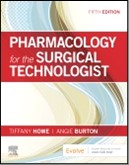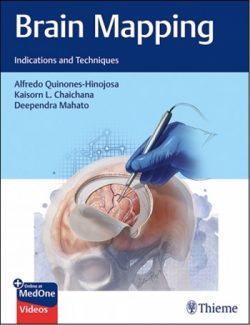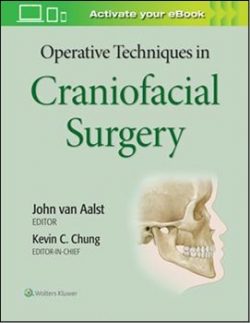Electrophysiological methods are used at nearly all levels of biological research today. From basic science investigation to bringing new drugs to market, electrophysiology is an indispensable research technique that provides essential insights into cellular and molecular functions. This work is intended to be a practical guide for understanding and using contemporary electrophysiological manipulations and assays in brain research. New researchers attempting to learn electrophysiological techniques are confronted with a lack of adequate guiding resources. Currently, most electrophysiology-based research knowledge is passed on by experienced individuals to others within the same laboratory. But, this master-apprentice scenario has many inherent difficulties, as it is both a time intensive process and also leads to incomplete knowledge transfer, or even superstitious and maladaptive practices. Few external guiding resources exist for a budding researcher who wishes to gain the skills necessary to conduct responsible and competent electrophysiology research. Dr. Yan Dong, an expert in utilizing electrophysiological techniques for brain research with fifteen years of experience, and Peter Neumann hope this work can act as a concise and practical aid to remedy the current situation. This book will cover both basic methods and advanced techniques clearly and in depth, as well as the essential background and theory necessary to understand the methods. Additionally, this book also covers conventional and contemporary patch-clamp methods, experimental design, data collection and analysis, common pitfalls to avoid, important nuances, technical concerns, practical applications, and advice for teaching new researchers. Together, this represents a contemporary best-practices guide for collecting and interpreting electrophysiological data for brain research.
Overview: Electrophysiology: Strength and Limitation
Part One: Basic Concepts
Chapter 1: Extracellular and intracellular recordings
Chapter 2: Electrical theory
Chapter 3: Amplifiers
Chapter 4: Salt environment
Chapter 5: Electrodes
Chapter 6: Spatiotemporal effects of synaptic current
Chapter 7: Perforated patch
Part Two: Recording of synaptic current
Chapter 8: Isolation of synaptic current
Chapter 9: Fast and slow synaptic currents
Chapter 10: Measuring kinetics of synaptic current.
Chapter 11: Measuring presynaptic release probability
Chapter 12: Long-term measurements
Chapter 13: Measuring reversal potentials
Part Three: Basic Experimentations of synaptic transmission
Chapter 14: Amplitude
Chapter 15: Pre vs. post synaptic effect
Chapter 16: Runup and rundown
Chapter 17: Kinetics of synaptic current
Part Four: Experimentations with computational components
Chapter 18: Measurement of a single synapse
Chapter 19: Measurement of silent synapses
Chapter 20: Dendritic patch
Part Five: Experimentations with molecular and visual components
Chapter 21: Electrophysiological and visual tags
Part Six: In vivo Recordings
Chapter 22: Extracellular recordings
“This book can be consulted as a ‘how to’ manual for
investigator. It is an excellent book for physiologists, biomathematicians,
students, postdocs, engineers, and biochemists with an interest in
neurophysiology. Established researchers may find it useful also.” (Joseph J.
Grenier, Amazon.com, February, 2016)
Nicholas M. Graziane, Ph.D.
Dr. Graziane obtained his Ph.D. from The State University of New York at Buffalo, and did his first postdoctoral training at Brown University before joining Dr. Dong’s laboratory at University of Pittsburgh. He is a well-published electrophysiologist interested in neurocircuits implicated in psychiatric disease with a focus on the electrical properties of the neurons residing within these neurocircuits. His research interests have contributed to Dr. Graziane’s 10+ years of experience as an electrophysiologist and have enabled him to successfully train many undergraduate students, graduate students, and junior postdoctoral fellows who have been interested in beginning a career in electrophysiology. Currently, Dr. Graziane’s research focuses on synaptic and circuitry mechanisms underlying psychiatric and psychological disorders. He is funded through a National Research Scholar Award (NIH).
Yan Dong, Ph.D.
Dr. Dong became interested in brain function when he was in high school and started his electrophysiological training during college. He received his Ph.D. from the Chicago Medical School, and did his postdoctoral training at Stanford University. He established and supervised his first independent laboratory at Merck and Co. from 2004 to 2006 as a senior scientist. He then joined Washington State University as an assistant professor in the Program of Neuroscience. In 2012, he joined University of Pittsburgh, and is curr
ently an associate professor in the Department of Neuroscience. His research focuses on synaptic and circuitry mechanisms underlying psychiatric
and psychological disorders. His research has been supported by National Institutes of Health (US), Hope Foundation for Depression Research (US), and Humboldt Stiftung (Germany).
Electrophysiology is one of the finest approaches capable of detecting and analyzing electrical events in the brain. However, like all other experimental approaches, it has its limitations. This book was created to serve as a guide for those endeavoring to understand the function of electrophysiology and its underlying components: neurons, neural systems, and the brain. It introduces and highlights important topics in the field of electrophysiology, while also extending these topics to practical electrophysiological approaches through the perspective of the two authors. This book is ideal for graduate students or junior postdoctoral fellows interested in starting a journey in synaptic neuroscience.
A practical guide to electrophysiological manipulations and assays in brain research
A best-practices guide for collecting and interpreting data
Intended for senior undergraduates and above





